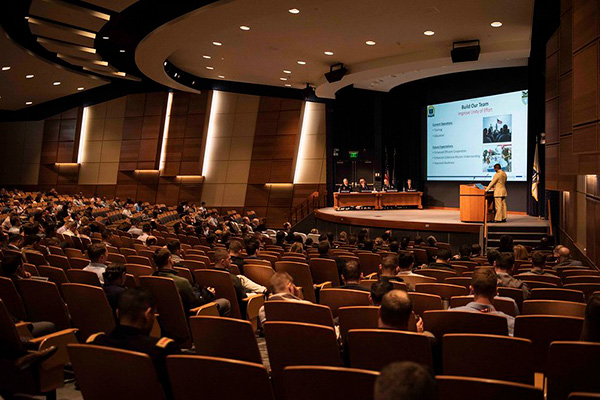National Security Decision Making
National Security Decision Making (NSDM) is designed to engage senior-rank students in the current and future complexities of a rapidly evolving national and international security environment. The course offers a broad interdisciplinary curriculum in contemporary security studies that encompasses a diverse spectrum of global and regional issues and perspectives, but with emphasis on U.S. decision-making challenges and processes at the national strategic level.

About the Course
This eight-credit hour courses provide a broad interdisciplinary foundation in contemporary security studies including international relations, regional studies, foreign policy analysis, and decision making. The curriculum consists of three sub-courses and a culminating exercise:
- Security Strategies
- Policy Analysis
- Decision Making
- NSDM Final Exercise (FX)
Capstone FX
At the end of NSDM, each seminar acts as a national strategic planning working group to produce and present a capstone FX. Student seminars simulate the work of a national strategic planning team in which the objective is to produce an executive-level strategic estimate of the longer-term future global security environment and the main tenants of a national security strategy and a nested national military strategy to advance U.S. national interests in this future environment. They must also develop operating concepts for how the future joint force will operate, a joint force structure within budget constraints, and an implementation case study.
Visit Department
